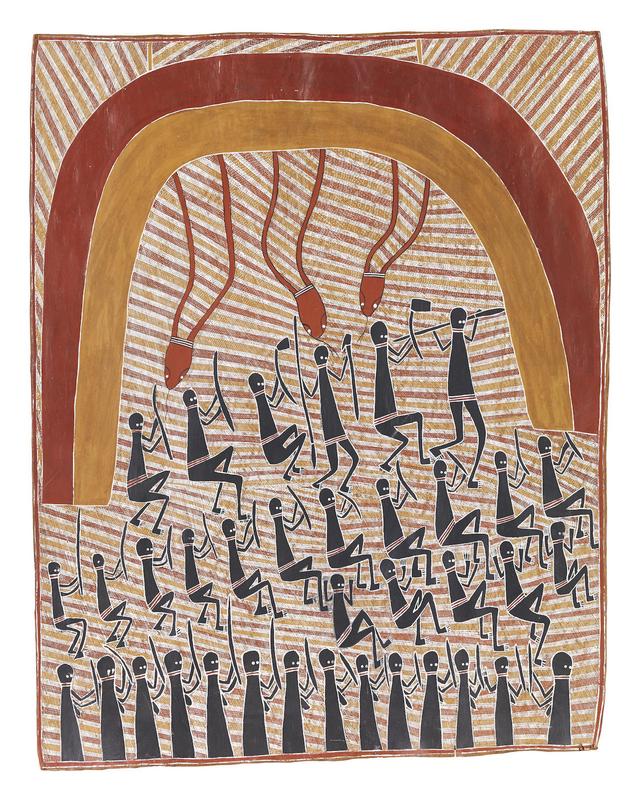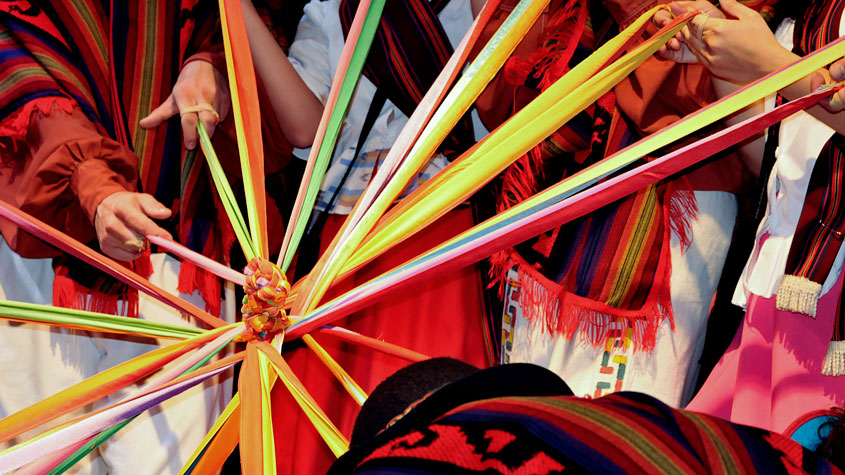 |
In recent decades, progress has been made toward the protection of indigenous and traditional knowledge, spurred by the efforts of indigenous groups and developing nations. Several international bodies, including the United Nations Educational, Scientific and Cultural Organization (UNESCO), the Food and Agriculture Organization (FAO), and the World Intellectual Property Organization (WIPO) have considered or addressed the protection of traditional knowledge.
Despite the measures taken by international bodies, as well as regional and national efforts, gaps persist from which failures to protect traditional knowledge and the biological or genetic resources associated with that knowledge arise. This book provides a global survey of the various measures in place to protect traditional knowledge, identifying these gaps in protection.
Part I - Nature of Subject Matter and Community Expectations
The first chapter explores the terms used for subject matter for which protection is sought by indigenous communities. Noting that this includes cultural and religious property, cultural and religious expression, and genetic resources, the term "Traditional Knowledge" is used by WIPO to cover each of these topics. Considering the example of the laws of several African nations, the book also retains use of the term "Folklore" to describe this subject matter, noting its superior applicability to expressive works while traditional knowledge implies a concept of "know-how".
The next chapter considers the exploitation of traditional knowledge that provides cause for protection. Folklore often has deep connections with religious practices and that which is regarded sacred, while traditional knowledge concerning medicinal plants and agriculture may be crucial to the life and well-being of indigenous and local communities. Exploitation of traditional knowledge has produced extensive profits in the pharmaceutical industry, with little of the benefit reaching the local community responsible for the innovation.
Additionally, the loss of religious relics and other folklore through colonization or conquest deprives local and indigenous communities of their cultural expression. Museums display these stolen pieces of folklore while the entertainment industry degrades indigenous and local cultural expression through commodification. The protection of traditional knowledge can remedy these issues, while also affecting preservation of culture, conservation of the environment, and other considerations like national identity.
The third chapter explores the gaps and overlap between intellectual property regimes and the protection of traditional knowledge, noting a beneficial yet imperfect analogy. The first clear problem are issues of ownership, as intellectual property typically concerns the property of individual creators and inventors, rather than cultures as a whole.
Copyright has several deficiencies: a term based on the life of an author is in tension with works authored by a culture. Much of folklore lacks fixation, existing perhaps as oral history or communal choreography that is passed on through generations. Patents may exclude traditional knowledge on the grounds of novelty or obviousness, noting the "traditional" nature of this subject matter. Additionally, much of the genetic resources and traditional knowledge relating to medicine may fall under exclusions for laws and products of nature. Lastly, trademarks are ineffective due to a lack of market sophistication for individual producers of goods concerning folklore; trademark law, however, may be more suited toward indicating cultural or tribal designations as a means of distinguishing indigenous and local cultures while preserving cultural integrity.
Part II - International Initiatives
The second part of the book covers the international efforts to protect traditional knowledge. It begins with a survey of international intellectual property agreements in chapter four. The Paris Convention and Universal Copyright Convention offer no protection for traditional knowledge, while the protections of the Rome Convention and Berne Conventions suffer from limited application to traditional knowledge. Although traditional performers are afforded protection under the WIPO Performances and Phonograms Treaty (WPPT), developed countries resisted the affording of similar protections against the misappropriation of genetic resources and traditional knowledge in the TRIPS agreement.
Despite limited effectiveness in international IP agreements, two international bodies - UNESCO and WIPO - have collaborated to seek protection for expressions of folklore in copyright law through the preparation of the Tunis Model Copyright Law, as discussed in chapter five. This law draws the greatest parallels with a variety of African national copyright law regimes, reflecting the laws of Kenya and Tunisia and then influencing the laws of Cameroon, Ghana, and Zaire. The chapter also addresses measures to curb both the trade of tangible cultural heritage and the misappropriation of intangible cultural heritage.
The next chapter presents the issues of genetic resources and biodiversity conservation
germane to the protection of traditional knowledge. This protection stems from the Convention on Biological Diversity (CBD) and subsequent agreements, including the Bonn Guidelines and the Nagoya Protocol. Some of the key concerns include benefit-sharing with regards to traditional knowledge, prior informed consent to access and utilize resources, the preservation and continued access of such resources, methods of dispute settlement, and a cooperative regime of awareness-raising and technology transfer. Additionally, the rights of farmers are implicated regarding plant varieties and genetic resources; the protection of these rights is particularly crucial with regards to farmers in indigenous and local communities.
 |
| Celebration at the closure of the 10th Meeting of the CBD in which the Nagoya Protocol was adopted - 10.30.2010 |
The series of treaties and declarations that enshrine international human rights provide particular attention and care to the rights of indigenous peoples and their traditional knowledge, as explored in chapter seven. The basic framework is outlined in the 1948 Universal Declaration of Human Rights, the International Covenant on Economic, Social and Cultural Rights, and the International Covenant on Civil and Political Rights. These rights were further considered by a working grouped formed under the Economic and Social Council of the United Nations (ECOSOC), culminating in the UN Declaration on the Rights of Indigenous Peoples, adopted June 29, 2006.
Part III - Regional and National Measures
Part III of the book presents several regional and national measures intended to protect traditional knowledge, beginning with a discussion of the trends in such protections in Africa. Many of these protections stem from African customary law, meaning that the contours and nature of these rights is interwoven with and informed by the social structure of various tribal societies across the continent. Additionally, several national intellectual property laws and regional agreements afford protections over traditional knowledge; Kuruk provides an extensive survey of these laws and agreements, presenting a variety of means to protect traditional knowledge and folklore including discretionary regimes, restrictions based upon citizenship, and several regional agreements concerning both folklore and the more utilitarian aspects of traditional knowledge.
Chapter nine presents the protection of traditional knowledge and folklore originating from the variety of Native American tribes in context with the tension between these tribes and the United States government. With a relationship that has long consisted of subjugation and the theft of land and property (including tangible folklore), one crucial concern presented is the efforts at restoration and preservation of cultural property. The chapter also addresses efforts by the United States to restrict or limit international protections for traditional knowledge as intellectual property, particularly as it relates to the Consolidated Document on Genetic Resources and the Draft Articles on Traditional Knowledge.

George Milpurrurru, Gumang - the Goose
Dancing Ceremony, c. 1983 - a bark painting
of the sort at issue in the Carpets Case
|
Part III concludes with a discussion of traditional knowledge protections in other regions including Europe, the Americas, Asia, and the Middle East in chapter 11. Europe has a variety of frameworks for such protection, including intellectual property law, regulations pursuant to the Nagoya Protocol, cultural heritage laws, as well as similar measures enacted on a national level by member states of the European Union. With indigenous communities spanning from the Chile to northern Canada - including Caribbean communities, the Andean community, Meso-American peoples, and many others - the Americas have a patchwork variety of laws that reflect the cultural property with which each community is concerned.
A similar reflection of such protection of the needs of the community in crafting the protection of traditional knowledge is seen in India's patent regime; the nation imposes substantial limitations and the potential for administrative exclusion regarding patents that concern biodiversity or agriculture. In the Middle East, this trend also takes hold as nations such as Turkey and Israel protect folklore through laws aimed at conservation of cultural heritage and antiquities.
A similar reflection of such protection of the needs of the community in crafting the protection of traditional knowledge is seen in India's patent regime; the nation imposes substantial limitations and the potential for administrative exclusion regarding patents that concern biodiversity or agriculture. In the Middle East, this trend also takes hold as nations such as Turkey and Israel protect folklore through laws aimed at conservation of cultural heritage and antiquities.
Part IV - In Search of Solutions
Considering potential solutions, Part IV begins with a discussion of complementary legal regimes that afford some protection for traditional knowledge. One concept of interest is a corollary to public domain, domaine public payant, in which "the works of unidentified authors can be exploited subject to payment of fees to the state." This concept, if coupled with a mechanism to share these fees with the communities that author these works presents an interesting solution to protecting folklore.
Chapter 13 presents a potential framework for solutions that pays particular attention to the form of the traditional knowledge and folklore for which protection is sought as well as the needs of the local or indigenous community seeking such protection - the recognition and enforcement of customary law. The societies that seek protection for their cultural heritage often have customary law reflecting the property interests and concerns implicated by various aspects of that cultural heritage; thus, if these laws can be recognized and enforced, traditional knowledge can be protected in line with the needs and vision of protection held by the genesis of that traditional knowledge.
Chapter 13 presents a potential framework for solutions that pays particular attention to the form of the traditional knowledge and folklore for which protection is sought as well as the needs of the local or indigenous community seeking such protection - the recognition and enforcement of customary law. The societies that seek protection for their cultural heritage often have customary law reflecting the property interests and concerns implicated by various aspects of that cultural heritage; thus, if these laws can be recognized and enforced, traditional knowledge can be protected in line with the needs and vision of protection held by the genesis of that traditional knowledge.
The next chapter addresses cases of biopiracy and one potential solution - a requirement
of disclosure. This requirement - which WIPO considered extensively in the 1980s - would require patent applicants to determine the source of relevant traditional knowledge and disclose it in their patent application. The contours of such a requirement have not yet been agreed upon, however, as the 1984 WIPO Draft Treaty was never adopted.
 |
| Turmeric was the subject of biopiracy concerning its application in the healing of wounds. |
The book concludes with a discussion of potentially addressing the protection of traditional knowledge through the principle of reciprocity. Noting that many of the impasses that prevent proper international protection of traditional knowledge are the varied interests of developing nations and developed nations, the interests of these two groups can be balanced by reciprocal recognitions. For example, developed nations can agree to recognize and protect traditional knowledge with the concurrent agreement of recognition of the patents of developed nations in developing nations' patent regimes. Finally, such recognition can be achieved between particularized countries without affecting the international intellectual property regime as a whole through mutual recognition agreements that are only binding upon party states.
Comment
This book is an interesting read for anyone curious about traditional knowledge, genetic resources, and attempts to protect these subjects both regionally and internationally. It provides a comprehensive picture of this global issue, addressing the gaps in current solutions with great insight. Pairing the inadequacies of our current international intellectual property system with potential solutions both within and outside of the realm of intellectual property, the book offers hope for greater protection of traditional knowledge, cultural heritage, and genetic resources in coming decades. This excellent primer for anyone interested in traditional knowledge can be purchased here.
ISBN: 9781785368479
eISBN: 9781785368486
Hardcover Price: £120.00
E-book Price: £25.00
Extent: 512 pp
Publication Date: 2020
E-book Price: £25.00
Extent: 512 pp
Publication Date: 2020
Book review: Traditional Knowledge, Genetic Resources, Customary Law and Intellectual Property
![Book review: Traditional Knowledge, Genetic Resources, Customary Law and Intellectual Property]() Reviewed by Thomas Key
on
Saturday, April 11, 2020
Rating:
Reviewed by Thomas Key
on
Saturday, April 11, 2020
Rating:






![[GuestPost] G1/24: Tuning in! A take on the state of proceedings before oral proceedings](https://blogger.googleusercontent.com/img/b/R29vZ2xl/AVvXsEjZhEivE5bp7QOwZsyZXAXbVNYSmLjUthkB2Q7fm1_dpB97u5lIQeyWT9ZadUTAH3Z-hXn13VpW4vBDRPx9emCnoDV6tbUTkyvfmqPv1nNInL8XMdrAtSZ2hcRQr2LjxKovC9wTk_XyZxQ0CtX1MUrO_Muz3OJ4ld8AftymsdUmKD7xNksYMwk6/s150/Picture%201.png)
![[Guest post] ‘Ghiblification’ and the Moral Wrongs of U.S. Copyright Law](https://blogger.googleusercontent.com/img/b/R29vZ2xl/AVvXsEhxl1BQBAW3Y-asjb1xXB9eA4DYy77fky6WgR-prC-_6DeBbDqOgCUDWyiz0Q3B23MWWAXnkbS2H2js7OUwA0JQXAHmsyVFgGIHeJz7zJ791vTzOD-4SJqWFIuywFXQyd3ahybbdZd4e8IEVfcNqctvyR8lumv_Gix6Tsw5cSvbHpTI1nwvztDuAQ/s150/IMG_2179.HEIC)



![[Guest book review] The Handbook of Fashion Law (with a discount code)](https://blogger.googleusercontent.com/img/b/R29vZ2xl/AVvXsEgB4h2AdqJKwq9O3Ft4Mb7C39tv_NeFpkzrOfvhIsuwAkM_ops2Hgj7fdwzq_TQsjQDvQrQa-yyC9Q9pNiugseXRlUaMdsr_cmYUbh9lH8HDECMCbsTuNboVgpafyEhkgDkVS6ruHkuz8Sx0QVGI_1S8R9kbsHdNIYrRjqhyphenhyphen010_txjJUYvlZOtWA/s150/Fashion%20Law%20Book%20Bicture.jpg)






No comments:
All comments must be moderated by a member of the IPKat team before they appear on the blog. Comments will not be allowed if the contravene the IPKat policy that readers' comments should not be obscene or defamatory; they should not consist of ad hominem attacks on members of the blog team or other comment-posters and they should make a constructive contribution to the discussion of the post on which they purport to comment.
It is also the IPKat policy that comments should not be made completely anonymously, and users should use a consistent name or pseudonym (which should not itself be defamatory or obscene, or that of another real person), either in the "identity" field, or at the beginning of the comment. Current practice is to, however, allow a limited number of comments that contravene this policy, provided that the comment has a high degree of relevance and the comment chain does not become too difficult to follow.
Learn more here: http://ipkitten.blogspot.com/p/want-to-complain.html